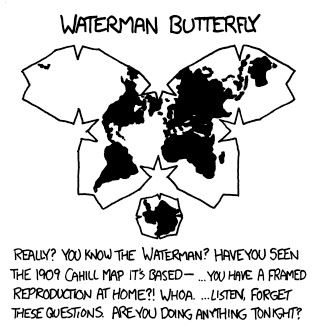

Rsync


Rsync


I think the controversial bit, is that it’s thanking a rival nation for invading and committing atrocities.
It’d be like if Zelensky came out and thanked Putin for invading Ukraine, as it let him be president over a more united country.
Sure, maybe technically correct, but people probably would be (rightfully) pretty pissed if he said it.


I feel like “X should be for the X-people” is maybe not the best phrasing, considering how that tends to play out throughout history.


God I wish, lol. Pretty sure he’s long since retired.
This headline just inspired me to channel his spirit, lol.


Yeah, I’m not surprised. I’d imagine an experience like being kidnapped would really change someone. Glad the little fella’s made it back to his family.
-Ken M
Did you read your own sources? They absolutely contradict the point you just made.
The number of sequels is the same as it’s ever been. Maybe even less.
It’s just that sequels perform better at the box office and pull in more viewers.
But there definitely aren’t more sequels according to the sources that you shared.
Also, (sorry for the second post), but did you actually read your sources? Cause I just did and they actually say that the number of needless sequels has either stayed the same or gone down since the 80s.
They are performing far better than they used to, but there are actually less of them now than ever.
I didn’t put words in your mouth. I was quoting the post I originally replied to.
I said that he said needless sequels “weren’t a thing.”
(He actually said “needles” sequels, to actually be pedantic, but I think that was probably a typo)
Sure, but he said “weren’t a thing,” not, “were less common.”
Like, yes, there have definitely been a rise in needless sequels, but it’s not like 1995 (year chosen at random and googled) didn’t have a sequel to “Ace Ventura: Pet Detective” as one of the top 5 movies of that year.
And if ever there was a franchise in which sequels were needless, lol.
When was this fantastical time? Cause I’m unconvinced it exists, lol.


Holy crap, the only reason I was still using reddit at all was because of this!
I thought about making the community myself, but decided I didn’t have the time to maintain it.
Thanks for doing this!! I’ll definitely be a contributed. :)


As an example, the lawsuit alleged that Faust and other white, male farmers are charged a $100 “administration fee” to participate in one program that exempts women and minority farmers from paying the same fee. In another example, Faust “participates in a USDA program that guarantees 90% of the value of loans to white farmers, but 95% to women and racial minorities,” according to the report.
While I’m not exactly sympathetic to the “plight of the white man,” it is a little weird (if true) that the USDA can have a “white men only fee” for some programs.
My understanding was that most DEI initiatives were built around breaking up old-boys-clubs by requiring preference for minority businesses when all other factors are considered equal. The above doesn’t really feel like that.


Other countries don’t enshrine freedom of speech the way the US does. In many countries certain types of political speech are outlawed.
Peanut butter powder?
Probably, but if you’re interpreting user inputs as raw code, you’ve got much much worse problems going on, lol.


I loved FFSend. When it died, I ended up standing up a GOKAPI server, as it was the closest alternative I could find at the time: https://github.com/Forceu/Gokapi
Definitely not as nice as FFSend though. I may have to give that fork a try instead.
Here’s the note taking and editors page of awesome-selfhosted. Looks like there are a few contenders in there. DailyTxT looks decent for your use case.
https://awesome-selfhosted.net/tags/note-taking--editors.html


I was gonna post this if you didn’t, lol.


Yeah, it can for sure. Definitely worth mentioning. Gotta watch what interface is set as the default router, or you’re bound to have a bad time. That said, the same is true with his originally proposed solution of pushing a trunk port to the VM, so it’s not any worse in that regard.
But yeah, full agreement on the correct solution. Keep it simple.
Is it possible for Chic-fil-a to ever redeem itself in your eyes?
If they fired everyone involved with every controversy and started donating every cent of profit to LGBT charity groups, would you say they were a good company, or is it once tainted always tainted.
Chic-fil-a has made a lot of changes in the past decade and a half, and I’m of the opinion that, if no amount of self reflection and change can ever make us reconsider our condemnation, then there’s no reason for anything to try and change, as it won’t stop the hate.
Not that Chic-fil-a is perfect, but I would argue they are now as good or better than any other fast food chain we’re not actively hating on. They actually pay their employees more than minimum wage and give them one guaranteed weekend day off if nothing else.
So why continue to put them down now that it’s “mission accomplished?” If the goal was for them to change, and they have, it seems that we should bring them back into the fold, no?